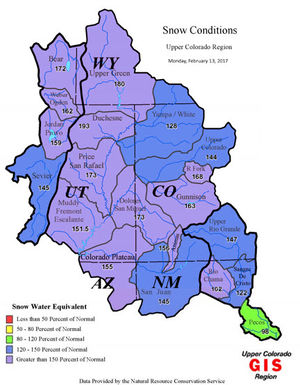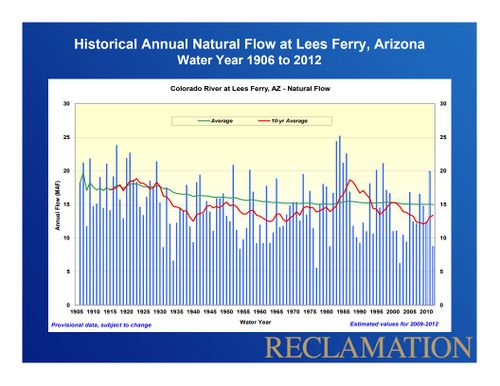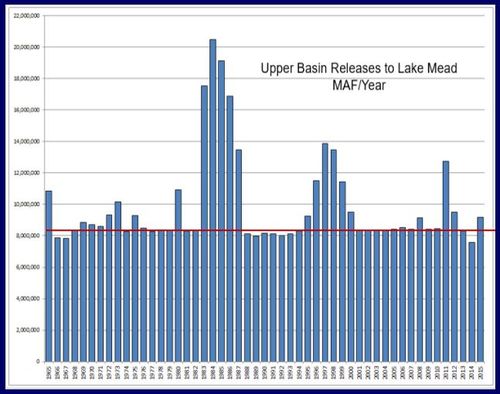Difference between revisions of "Hydrology"
Cellsworth (Talk | contribs) |
Cellsworth (Talk | contribs) |
||
| Line 76: | Line 76: | ||
== '''Inflow Volumes to Lake Powell and Release Volumes from Glen Canyon Dam''' == | == '''Inflow Volumes to Lake Powell and Release Volumes from Glen Canyon Dam''' == | ||
| − | |||
| − | |||
[[File:LakePowellInflows1906 2012.JPG|right|500px|thumbnail|[https://usea.org/sites/default/files/event-/Final_Colorado_Overview.pdf https://usea.org/sites/default/files/event-/Final_Colorado_Overview.pdf] ]] | [[File:LakePowellInflows1906 2012.JPG|right|500px|thumbnail|[https://usea.org/sites/default/files/event-/Final_Colorado_Overview.pdf https://usea.org/sites/default/files/event-/Final_Colorado_Overview.pdf] ]] | ||
Revision as of 14:27, 25 November 2020
|
|
Upper Colorado River Basin HydrologyThe Upper Colorado River Basin regularly experiences significant year to year hydrologic variability. During the 17-year period 2000 to 2015, however, the unregulated inflow to Lake Powell, which is a good measure of hydrologic conditions in the Colorado River Basin, was above average in only 3 out of the past 17 years. The period 2000-2016 is the lowest 17-year period since the closure of Glen Canyon Dam in 1963, with an average unregulated inflow of 8.57 maf, or 79% of the 30-year average (1981-2010). (For comparison, the 1981-2010 total water year average is 10.83 maf.) The unregulated inflow during the 2000-2016 period has ranged from a low of 2.64 maf (24% of average) in water year 2002 to a high of 15.97 maf (147% of average) in water year 2011. [1] |
| Current Status |
Current Operations | Inflow Forecasts and Model Projections |
|---|



